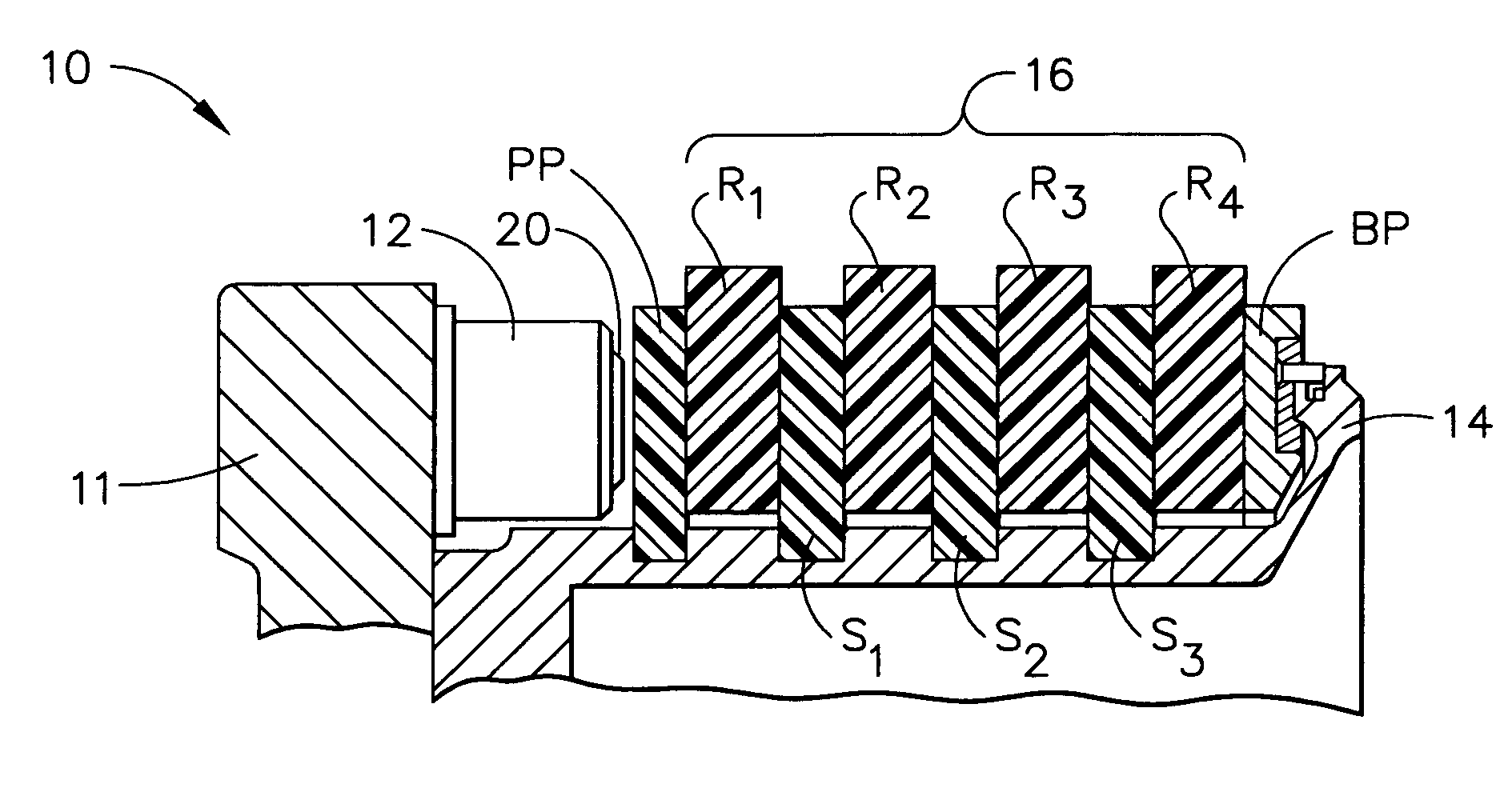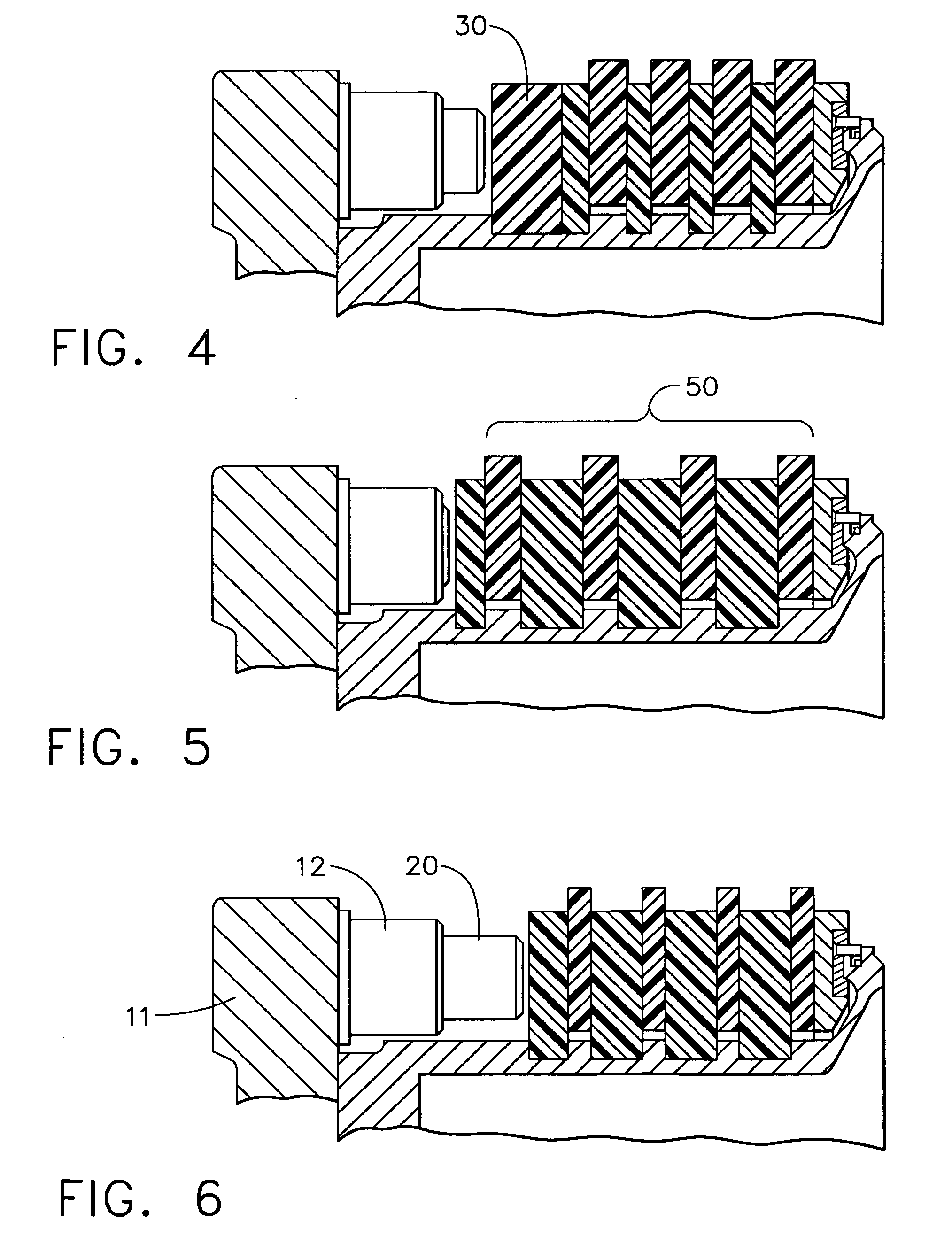Method of increasing friction material utilization for carbon brakes
a technology of carbon disc brakes and friction material, which is applied in the direction of axially engaging brakes, brake types, actuators, etc., can solve the problems of significant amount of material ground, worn one-piece discs, and inability to make good economic sense of disc storage for aircraft owners, so as to increase the utilization of carbon discs in aircraft brakes
- Summary
- Abstract
- Description
- Claims
- Application Information
AI Technical Summary
Problems solved by technology
Method used
Image
Examples
Embodiment Construction
[0021]Reference is first to FIG. 1, where a first configuration of a rotor / stator assembly of an aircraft carbon brake unit 10 is illustrated. The brake unit 10 includes a torque tube 14 attached to a piston housing 11 by a plurality of bolts (not shown). The piston housing 11 includes a piston bushing assembly 12 with a piston 20. The heat stack designated generally by reference numeral 16 includes carbon rotor discs, R1–R4, that engages, via spline and slot arrangements, the surrounding wheel (not shown), as is well known in the art, and alternating carbon stator discs, S1–S3, engaging the torque tube 14 via the well known spline and slot arrangements. At one end of the heat stack 16 is a pressure plate, PP, between the piston 20 and the rotor R1. At the other end of the heat stack 16 is a back plate, BP, which engages the torque tube 14 via a steal structure, as is also well known in the art of carbon disc brakes. The actual number of stages or disc pairs will vary from brake to ...
PUM
 Login to View More
Login to View More Abstract
Description
Claims
Application Information
 Login to View More
Login to View More - R&D
- Intellectual Property
- Life Sciences
- Materials
- Tech Scout
- Unparalleled Data Quality
- Higher Quality Content
- 60% Fewer Hallucinations
Browse by: Latest US Patents, China's latest patents, Technical Efficacy Thesaurus, Application Domain, Technology Topic, Popular Technical Reports.
© 2025 PatSnap. All rights reserved.Legal|Privacy policy|Modern Slavery Act Transparency Statement|Sitemap|About US| Contact US: help@patsnap.com



